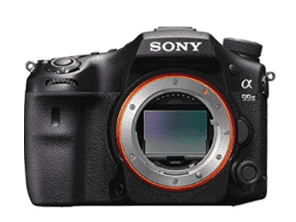Every single day, a new camera model is being invented that’s equipped with the most modern technology. Though, it can make previously released models obsolete, there are still older models that, up-to-this-date, photographers prefer to use. And most of those are full-frame DSLRs.
If you’re wondering what’s the best full-frame DSLR this 2022, we provide some tips on how to choose it.
And here’s a list of best full frame DSLR cameras that we prefer:
10 Best Full-Frame DSLRs in 2022
1. Nikon D850
Want to shoot a fast-moving subject? With D850, it’s possible as it has a high AF system capability and 7fps burst shooting. D850 is also advantageous to use in shooting landscapes and portraits because it has 45.7-megapixel resolution with BSI-CMOS sensor which is great for low light conditions.
The disadvantage of D850 is, for a high-end camera the focus peaking isn’t available whenever shooting on 4k video.
2. Canon EOS 5D Mark IV
Mark IV may come to the 5D family series, but Canon made sure that it’ll stand-out from the previous models. And that’s by adding new features to Mark IV such as its body is designed with weather-sealing and 75-grams lighter.
It also has 30.4-megapixel full-frame sensor that’s equipped with the on-chip Analog-to-Digital conversion.
The disadvantage of D850 is the optimization of new customizable options is difficult to access and only experienced users can easily manage it.
3. Canon EOS 5DS
Many enjoy using 5DS because of its convenience and easy to handle. But of course, its feature doesn’t limit from there. 5DS has lots of features and one of it is its whopping megapixel full-frame CMOS Sensor which is 50.6 match with a Dual DIGIC 6 image processors. So, you can assure that all images captured are of superb quality.
Another great improvement of 5DS from the previous models is its Autofocus system. It has a 61-point AF system with 41 cross-type points (this allows fast and decisive focus even in challenging light conditions). Some users say that this AF system is a bit slow in live view and video; but overall reliability, this feature is very convenient to use.
4. Nikon D750
D750 may come in a small package (literally as it’s designed to be portable and lightweight); but not its feature. Though, it only has a 24-Megapixel compared to the 3 full-frame cameras we’ve mentioned above; some photographers still prefer to use this because it has a much faster burst mode, better autofocus system with subject/face recognition and tracking, 3.2” tilting LCD, built-in Wi-Fi and so on.
Its only disadvantage is it has a limited buffer capacity that affects the continuous shooting and the tendency to slightly overexpose.
5. Nikon D5
Looking for a full-frame DSLR with ultimate performance? D5 is the ideal option as it’s built extremely robust and weather-sealed. Plus, it has a large battery that supports its 12-fps continuous shooting, a high-resolution RGB metering sensor that enables face-and-eye detection, good JPEG color and quality and more.
The disadvantage that most users found in D5 are low ISO dynamic range and lack of RAW file malleability; and the Wi-Fi is an expensive add-on.
6. Canon EOS-1D X Mark II
When it comes to improvements, 1D has numerous new ones. The first in line would be its AF system which becomes much faster and covers much wider coverage range.
Video quality-wise, Canon added 4K frame grab that allows an effective 60 fps burst rate, with great autofocus. This is advantageous for videographers who need high-quality video without doing a lot of work. But if you’re the type who uses deep feature set, this feature can be a bit of a disadvantage.
7. Sony Alpha A99 II
A99 II users have a mixed opinion about its efficiency – both in performance and handling. One example of it is its AF system which is beautifully-designed and proven to be powerful. However, it’s not always that accurate.
Opinions are important in deciding which camera to buy but not as important as clear facts. What clear about A99 II is: it’s the only camera that can continuously shoot at 12 fps with C-AF abilities, 42-megapixel resolution, and respectable battery life.
8. Canon EOS 6D Mark II
6D is one of the classic DSLR of Canon. It may be classic but its feature is very much modern like its 26-megapixel sensor with good ISO performance, updated autofocus system, weather-sealed body and video stabilization system.
These features are advantageous for shooting of casual video clips or for photographers who are looking for a backup body for full-frame glass Canon.
9. Nikon D810
When D810 was released, not everyone found it impressive even it has an excellent ergonomics, menus, and build quality. But upon exploring its technologies, users started to appreciate D810.
D810 has EXPEED 4 processor with dynamic range at ISO 64 mode that competes with medium format image quality. Also, it has AF settings that can be accessed through a push of a button and turning of the dial.
The only disadvantage of D810 is it has limited video performance and slower autofocus in Live View.
10. Pentax K-1
K-1 provides an excellent image quality of 36-megapixel and has 5-axis In-Body image stabilization. This is an advantage in photographing a landscape, macro and still images.
Its body is designed with weather sealed, so, you can assure that no matter what environment condition you’re in, your K-1 can stand it.
The latest upgrade is within the AF system wherein the Pixel Shift Resolution technology now offers a Motion Correction setting.





















